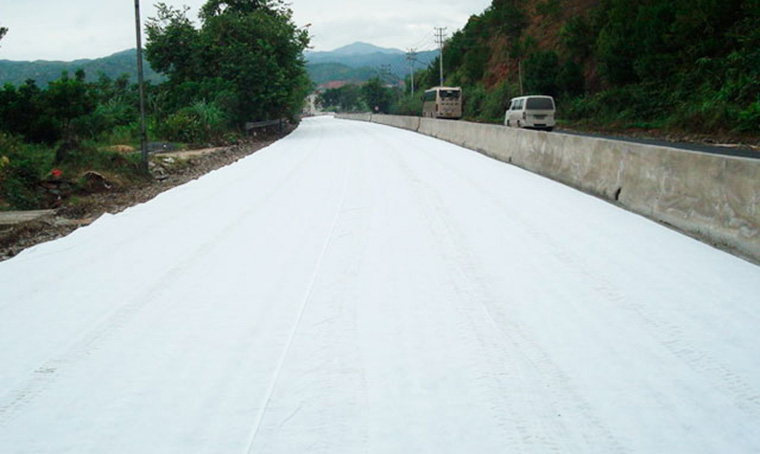As an engineering material that can improve project quality, speed up construction, reduce project cost and prolong maintenance period, geotextiles are widely used in various fields such as highways, railways, water conservancy and port construction, but geotextiles are laid and overlapped. details, you know?
1. Geotextiles are recommended to be erected mechanically or manually laid. When laying, care should be taken to make the rough side of the singeing face up, and then fix one end with a fixer, and tighten it with machinery or manpower. layout. The fixer includes a fixation nail and a fixation iron sheet. Cement nails or shooting nails should be used for fixing nails, with a length of 8 to 10 cm; iron strips with a thickness of 1 mm and a width of 3 mm can be used for the fixed iron sheet.
2. The geotextile is lapped horizontally by about 4-5cm. According to the paving direction, press the rear end under the front end, cement it with hot asphalt or emulsified asphalt, and fix it with a fixer; the longitudinal lap is also about 4-5cm , can be directly dried with binding oil. If the lap joint is too wide, the interlayer at the lap joint will become thicker, and the bonding force between the surface layer and the base layer will be weakened, which will easily lead to adverse effects such as bulging, detachment, and displacement of the surface layer. Therefore, the parts that are too wide should be cut off.
3. The geotextile should be laid in a straight line as much as possible. When it is time to turn, the fabric bends are cut open, laid over and sprayed with tack coat to glue. The wrinkling of the fabric should be avoided as much as possible. If there are wrinkles during the laying (when the wrinkle height is > 2cm), this part of the wrinkle should be cut, and then overlapped in the laying direction and handed over with adhesive layer oil.
4. When the geotextile is laid, after spraying the asphalt sticky oil twice and cooling for about 2 hours, an appropriate amount of fine yellow sand should be thrown in time to prevent the vehicle from passing on the geotextile, the cloth will be lifted or damaged due to the sticky wheel oil. , The amount of fine sand is about 1 ~ 2kg/m2.
Post time: Apr-13-2022

